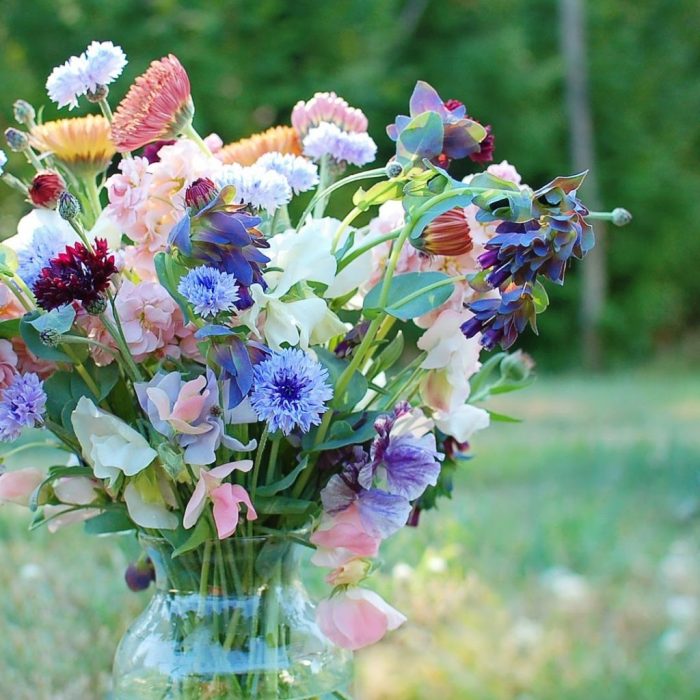Types of Outdoor Hanging Plant Pots
Outdoor hanging plant pots – Choosing the right hanging planter for your outdoor space involves considering factors beyond aesthetics. Material, shape, size, and climate all play crucial roles in the longevity and success of your hanging garden. This guide will explore the diverse options available, helping you make an informed decision.
Material Properties and Climate Suitability, Outdoor hanging plant pots
The material of your hanging planter significantly impacts its durability and lifespan, particularly in varying climates. The following table summarizes the properties of common materials and their suitability for different environments.
| Material | Properties | Climate Suitability | Maintenance |
|---|---|---|---|
| Ceramic | Elegant, porous, good drainage (if unglazed), prone to cracking in freezing temperatures. | Best suited for mild climates; needs protection from frost. | Regular cleaning; avoid drastic temperature changes. |
| Metal (Aluminum, Steel, wrought iron) | Durable, lightweight (aluminum), rust-prone (steel, wrought iron unless treated), can get very hot in direct sun. | Suitable for most climates with appropriate surface treatments (powder coating, galvanizing). | Regular cleaning; rust prevention treatment may be needed. |
| Plastic | Lightweight, inexpensive, durable, comes in various colors and designs, can fade in strong sunlight. | Suitable for most climates; relatively low maintenance. | Regular cleaning; can be easily replaced if damaged. |
| Wood | Rustic appeal, requires regular treatment to prevent rot and insect damage, can be heavy. | Suitable for mild climates; requires regular sealing and maintenance. | Regular sealing, cleaning, and pest control. |
| Wicker | Lightweight, breathable, aesthetically pleasing, susceptible to moisture damage. | Best suited for dry climates; needs protection from rain and moisture. | Regular cleaning and protection from the elements. |
Shapes and Sizes of Outdoor Hanging Plant Pots
The shape and size of your hanging planter directly influence its aesthetic impact and the types of plants it can accommodate. Consider the overall design of your outdoor space and the specific needs of your plants when making your selection.
Round Hanging Pots: These classic shapes offer a balanced and harmonious aesthetic. Their symmetrical design complements a variety of architectural styles and plant types. Smaller round pots are ideal for trailing plants like petunias or ivy, while larger ones can accommodate more substantial plants or multiple smaller plants arranged together. The circular form provides ample space for root growth and even water distribution.
Square or Rectangular Hanging Pots: These offer a more modern and structured look, often featuring clean lines and minimalist designs. They are well-suited for vertical gardens or spaces with a contemporary feel. Their shape can be particularly effective for showcasing plants with upright growth habits. The straight sides also allow for efficient use of space.
Cone-Shaped Hanging Pots: These unique shapes add a touch of whimsy and visual interest. Their tapering form is visually appealing and can create a dramatic focal point. The sloping sides can be ideal for plants that prefer good drainage, and the narrower top creates a beautiful display for trailing plants.
Unique and Ornamental Shapes: Beyond the standard shapes, numerous creative designs are available, ranging from birdhouse-shaped planters to intricately designed metalwork. These offer an opportunity to personalize your outdoor space and make a bold design statement. The choice depends entirely on personal preference and the overall style of the garden.
Durability and Longevity of Hanging Planter Materials
The durability and longevity of your hanging planter are critical factors determining its lifespan and value. Some materials inherently offer greater resistance to weathering and damage than others.
Ceramic planters, while aesthetically pleasing, are generally less durable than metal or plastic options, particularly in climates with significant temperature fluctuations or freezing temperatures. Cracking and chipping are common issues. Metal planters, especially those made of treated steel or aluminum, offer excellent durability and longevity, often lasting for many years with minimal maintenance. Plastic planters are generally very durable and resistant to damage, but they can fade in direct sunlight over time.
Wood planters, while aesthetically appealing, require regular maintenance (sealing and treatment) to prevent rot and insect infestation. Wicker planters are typically the least durable, being highly susceptible to moisture damage and requiring careful protection from the elements.
FAQ Corner: Outdoor Hanging Plant Pots
What are the best plants for shady areas in hanging pots?
Shade-tolerant plants like impatiens, coleus, ferns, and begonias thrive in hanging baskets with less direct sunlight.
How often should I water my hanging plants?
Watering frequency depends on factors like plant type, pot size, weather, and soil. Check soil moisture regularly; water when the top inch feels dry.
How can I prevent pests and diseases in my hanging plants?
Regularly inspect plants for pests. Use appropriate insecticidal soap or neem oil. Ensure good air circulation to prevent fungal diseases.
What should I do if my hanging pot cracks?
Depending on the material and extent of damage, you might be able to repair minor cracks with epoxy resin or replace the pot entirely.
Embrace the beauty of outdoor hanging plant pots, transforming your space into a vibrant, verdant oasis. For larger plants needing substantial support, consider upgrading to big plastic plant pots as a strong and stylish base. Then, simply hang your flourishing creations, letting their beauty cascade and fill your world with joy.


